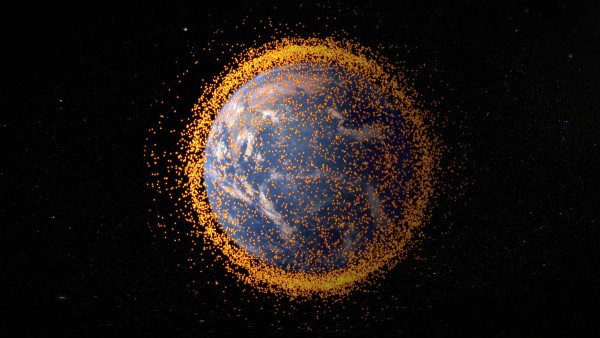
Amid the many proposals to solve the growing problem of space debris, an international team of scientists has put forward an idea for a space-based system that would first locate small space debris – the most dangerous space debris, around the size of one centimeter (0.4 inches) – with a super-wide field-of-view telescope. Then it would use a powerful laser pulse to zap the debris, reduce its orbital velocity, thereby causing it to reenter into Earth’s atmosphere and vaporize due to air friction. The team proposes to install versions of its system on the International Space Station (ISS), to clear the area around it as it moves through space. Later, a free-flying mission could be placed in a polar orbit, near where the greatest concentration of debris is found.
A team at RIKEN, a research institute in Japan proposal, led the proposal, which is published online in an upcoming July–August 2015 issue of Acta Astronautica.
One-centimeter-sized space debris can collide with active space vehicles such as ISS and other satellites. Most space debris, in fact, is smaller than one centimeter. This category of debris includes dust from solid rocket motors, surface-degradation products (such as paint flakes) and frozen coolant droplets released from RORSAT nuclear-powered satellites. It includes fragments from disintegration, erosion and collisions. Impacts by these one-centimeter-sized particles cause constant wear and tear on unshielded satellites. Read more about space debris causing orbital collisions.
To detect these tiny bits of space debris, the team would use the proposed EUSO telescope, originally planned to detect ultraviolet light emitted from air showers produced by ultra-high energy cosmic rays entering the atmosphere at night. Toshikazu Ebisuzaki, who led the effort, said in a statement:
We realized that we could put it to another use. During twilight, thanks to EUSO’s wide field of view and powerful optics, we could adapt it to the new mission of detecting high-velocity debris in orbit near the ISS.
Enjoying EarthSky so far? Sign up for our free daily newsletter today!
To zap the small debris and remove it from orbit, the team proposes a recently developed high-efficiency laser system, the CAN laser, originally developed to power particle accelerators. It consists of bundles of optical fibers that act in concert to efficiently produce powerful laser pulses.
The group plans to deploy a small proof-of-concept experiment on the ISS, with a small, 20-centimeter version of the EUSO telescope and a laser with 100 fibers. Ebisuzaki said:
If that goes well, we plan to install a full-scale version on the ISS, incorporating a three-meter telescope and a laser with 10,000 fibers, giving it the ability to deorbit debris with a range of approximately 100 kilometers.
Looking further to the future, we could create a free-flyer mission and put it into a polar orbit at an altitude near 800 kilometers, where the greatest concentration of debris is found.

Bottom line: Scientists propose to install both test and full-scale versions of the Euso telescope on the International Space Station with the goal of detecting orbiting bits of debris, approximately one centimeter (0.4 inches) in size. A CAN laser would then be used to zap the debris and ultimately cause it to reenter Earth’s atmosphere, burning up as natural space meteors do.











